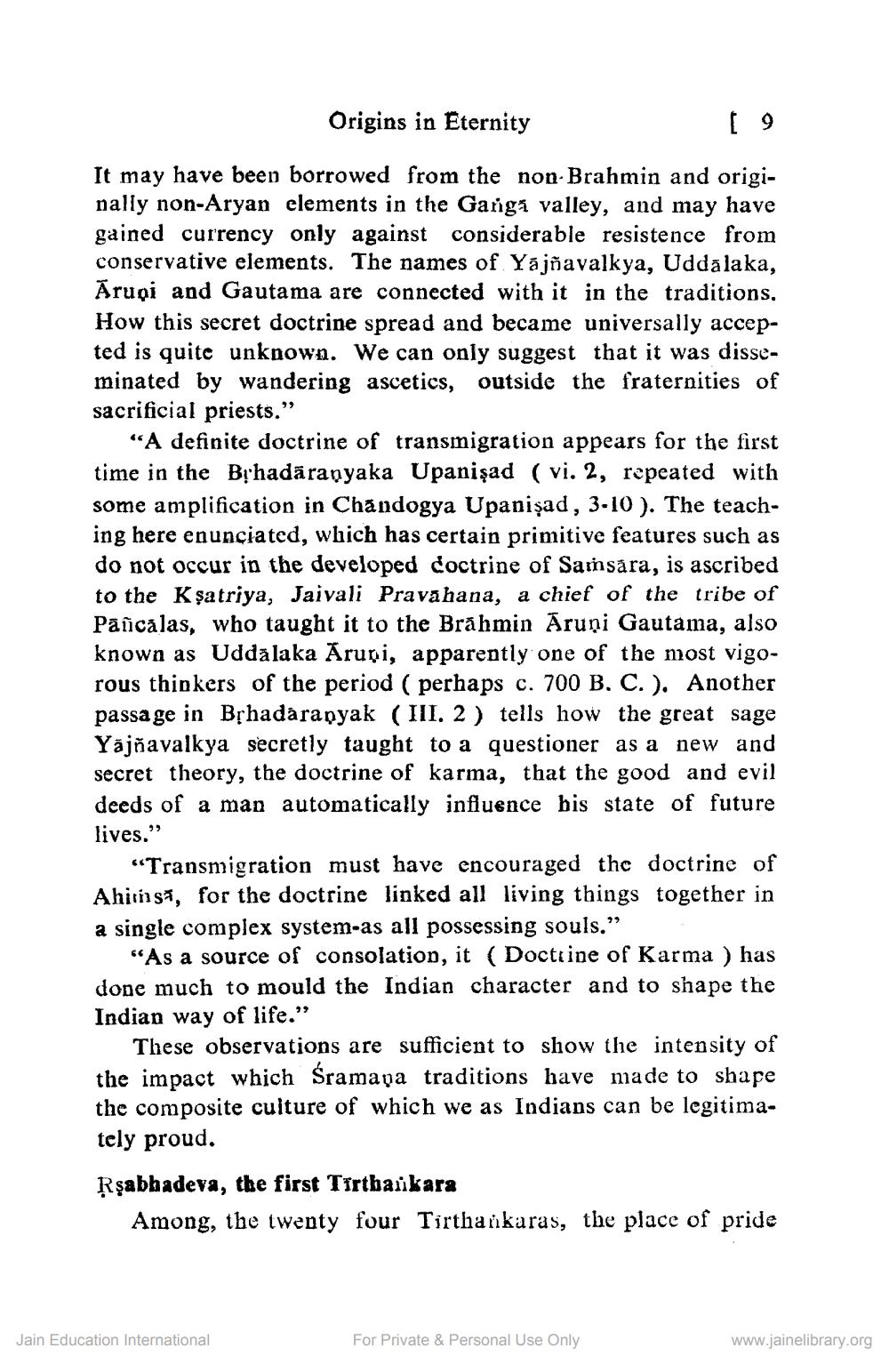________________
Origins in Eternity
It may have been borrowed from the non-Brahmin and originally non-Aryan elements in the Gargi valley, and may have gained currency only against considerable resistence from conservative elements. The names of Yajñavalkya, Uddā laka, Ārupi and Gautama are connected with it in the traditions, How this secret doctrine spread and became universally accepted is quite unknown. We can only suggest that it was disseminated by wandering ascetics, outside the fraternities of sacrificial priests."
“A definite doctrine of transmigration appears for the first time in the Brhadaranyaka Upanişad ( vi. 2, repeated with some amplification in Chandogya Upanişad, 3-10). The teaching here enunciated, which has certain primitive features such as do not occur in the developed doctrine of Samsara, is ascribed to the Kșatriya, Jaivali Pravahana, a chief of the tribe of Pascalas, who taught it to the Brahmin Aruņi Gautama, also known as Uddā laka Ārupi, apparently one of the most vigorous thinkers of the period ( perhaps c. 700 B. C.). Another passage in Bịhadaraṇyak (III. 2) tells how the great sage Yājňavalkya secretly taught to a questioner as a new and secret theory, the doctrine of karma, that the good and evil deeds of a man automatically influence bis state of future lives."
“Transmigration must have encouraged the doctrine of Ahimst, for the doctrine linked all living things together in a single complex system-as all possessing souls."
"As a source of consolation, it (Doctrine of Karma ) has done much to mould the Indian character and to shape the Indian way of life."
These observations are sufficient to show the intensity of the impact which Sramaya traditions have made to shape the composite culture of which we as Indians can be legitimately proud. Rşabhadeva, the first Tirtbalikara
Among, the twenty four Tirthankaras, the place of pride
Jain Education International
For Private & Personal Use Only
www.jainelibrary.org




